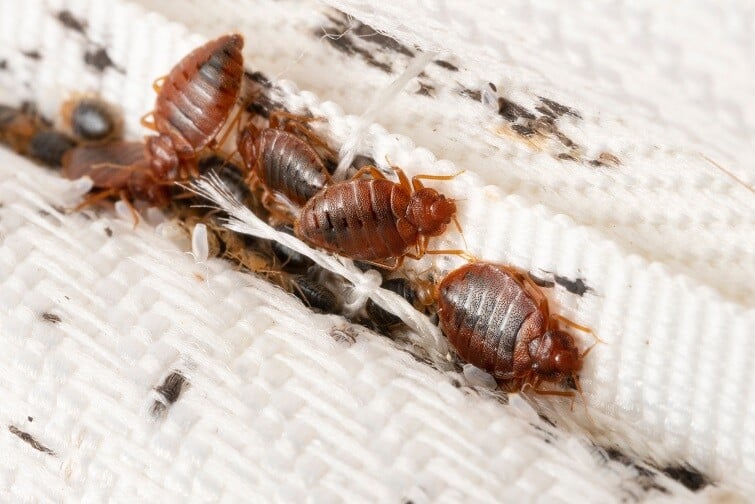Reliable Bed Bug Exterminator: DC Providers with Heat Treatment
Reliable Bed Bug Exterminator: DC Providers with Heat Treatment
Blog Article
Exploring the Scientific Research Behind Bed Bug Warmth Treatments as a Sustainable Parasite Management Approach
In the realm of parasite administration, the pursuit for effective and lasting solutions stays a consistent pursuit. One such approach that has acquired grip over the last few years is making use of heat treatments to deal with bed bug invasions. By using the science behind thermal fatality factors for these persistent insects, warmth treatments provide an encouraging choice to conventional chemical-based techniques. The intricacies of exactly how warm properly eliminates bed bugs and the wider effects for lasting pest administration techniques make this a topic worth checking out better.
Bed Bug Heat Treatment Process

Thermal Death Factor for Bed Bugs
Revealing bed bugs to raised temperatures past their thermal tolerance variety is crucial for accomplishing reliable removal in warmth treatment procedures. The thermal fatality point for bed insects refers to the temperature at which these insects can not survive. Study suggests that bed pests start to die when revealed to temperatures over 113 ° F(45 ° C) for a continual period. As the temperature level increases, so does the death price of bed bugs. At around 118 ° F(48 ° C ), bed insects start to pass away rapidly, with a mortality price of virtually 99% within minutes of exposure. This shows the level of sensitivity of bed bugs to high temperatures and highlights the performance of warmth treatments in eliminating problems. By getting to and maintaining temperatures above the thermal death factor for bed pests, parasite management experts can make sure thorough elimination of bed bug populations, including hard-to-reach locations where chemical therapies might be much less reliable. Understanding the thermal death point for bed insects is necessary for applying successful warm treatment methods and accomplishing lasting bug monitoring end results.
Benefits of Warm Treatments
Having established the important thermal fatality point for bed insects, it is necessary to now check out the substantial advantages that warmth treatments use in successfully eliminating these durable insects. One of the key advantages is that warm can permeate deep into fractures and crevices where bed pests hide, ensuring that even the most hard-to-reach areas are heated up to deadly temperatures.
Furthermore, warmth treatments are ecologically pleasant and non-toxic, making them a sustainable pest management technique. Unlike chemical pesticides, heat therapies do not leave hazardous residues that can pose dangers to human wellness or the environment. This facet is especially important in sensitive atmospheres such as health centers, colleges, and suburbs where chemical usage might not be preferable.
Furthermore, warm therapies have a high success price in getting rid of bed pest infestations in a single therapy, minimizing the demand for numerous gos to and minimizing disruption to occupants. This performance not only saves time and money yet additionally supplies comfort to those dealing with bed pest issues.
Effectiveness of Warm Therapy

Warmth therapies have the included benefit of eliminating bed bug eggs, which are usually immune to standard chemical treatments. In general, the efficiency of warmth treatments in removing bed pest problems makes them a dependable and sustainable bug administration method.
Lasting Bug Monitoring Conveniences
Carrying out sustainable pest management techniques uses long-lasting benefits for both the setting and public wellness. By using methods such as warmth therapies for insect control, we can reduce the dependence on dangerous chemical pesticides that can have unfavorable effects on ecosystems and human wellness - bed bug heat treatment. Sustainable parasite administration methods help in protecting biodiversity by targeting specific parasites without hurting non-target microorganisms, consequently maintaining a well balanced community
In addition, sustainable parasite administration techniques add to the total health and wellness and health of the public. By decreasing exposure to poisonous chemicals used in standard pest control techniques, warmth treatments give a safer option for parasite management in property, commercial, and public areas. This decrease in chemical use also assists in protecting against pesticide deposits from infecting water, air, and dirt, securing ecological quality.
Conclusion
To conclude, bed pest heat treatments have been revealed to be a reliable and lasting bug monitoring approach. The thermal fatality point for bed bugs makes them vulnerable to warm therapies, which have countless benefits over traditional chemical treatments. The effectiveness of warm treatments in getting rid of bed insect invasions while reducing environmental impact highlights the capacity of this technique as a sustainable service for bug control.
The bed insect warm therapy process includes increasing the temperature within plagued areas to a level that efficiently eliminates bed bugs and their eggs. By reaching and Visit This Link maintaining temperature levels over the thermal fatality factor for bed insects, insect administration professionals can guarantee comprehensive elimination of bed pest populaces, consisting of hard-to-reach areas where chemical treatments might be much less efficient. One of the main advantages is that heat can pass through deep right into fractures and crevices where bed pests conceal, guaranteeing that also the most hard-to-reach locations are heated to lethal temperature levels. Unlike chemical therapies that may leave behind immune populaces, heat treatments supply a ecologically friendly and safe option that can permeate deep into furnishings, walls, and various other hard-to-reach locations where bed bugs conceal.
The thermal death point for bed insects makes them vulnerable to heat therapies, which have various benefits over standard chemical treatments.
Report this page